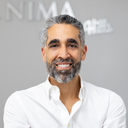Posted underRevision Rhinoplasty q&a
What can I do to get a softer, more rounded nose tip? Would de-projection be visible from a front-facing view? (photos)
I've already had rhinoplasty to remove a dorsal hump and to lift the tip. I'm going to be having a revision soon. At my most recent consultation I told my surgeon I wanted the tip lifted and deprojected, and also the dorsal hump shaven slightly more. I'm wondering if there is anything else I should have mentioned to make sure I get the results I want. Currently my nose tip is very sharp, pointy and droopy. What I want is a softer, more rounded/blunt nose tip. Can this be achieved and if so how?What changes to the front view of my nose can I expect if I have my nose tip deprojected? For example, can a tip deprojection make the nose tip look wider from the front? Also if the tip is deprojected, can it give the nose a more "blunt" appearance, as opposed to sharp and refined?
Answers (7)
From board-certified doctors and trusted medical professionals
Dr. Richard W. Fleming, MD (retired)
Board Certified Facial Plastic Surgeon
Answer
More Revision Rhinoplasty Questions
See all Revision Rhinoplasty Q&AWE SEND PRETTY
EMAILS
What’s trending? Who’s turning heads? Which TikTok myths need busting? We’ve got you. No fluff, no gatekeeping—just real talk. Get our free, unfiltered newsletter.



